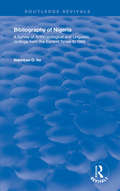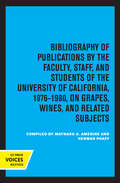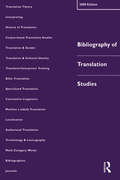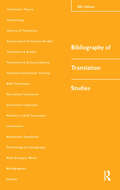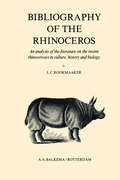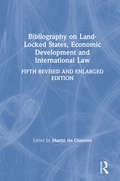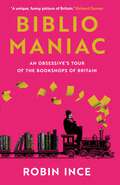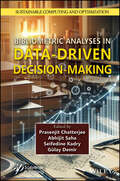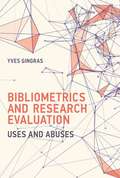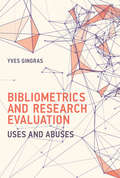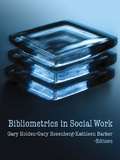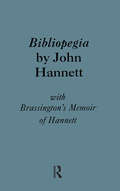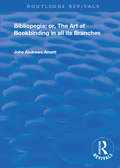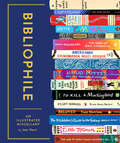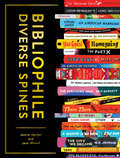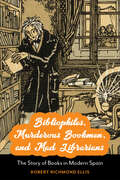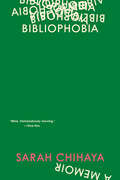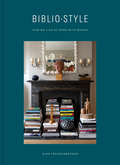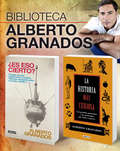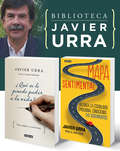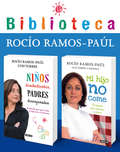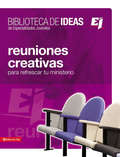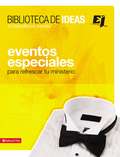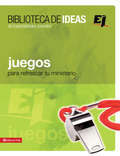- Table View
- List View
Bibliography of Nigeria: A Survey of Anthropological and Linguistic Writings form the Earliest Times to 1966 (Routledge Revivals)
by Nduntuei O. ItaFirst published in 1971, this major bibliography devoted to Africa’s most populous country – Nigeria – is therefore a timely contribution which must be welcomed by all. The Bibliography of Nigeria contains over 5,400 entries in archaeology, all branches of anthropology, linguistic and relevant historical and sociological studies. Many of the entries carry indicative or informative annotations which have greatly enhanced the usefulness of the work. The history and culture of Africa constitutes a rich area of study and research which is attracting an ever-increasing number of scholars the world over. The new impetus which African studies is receiving in the major centre of learning today has added urgency to the long-neglected problem of bibliographical control of the vast literature. The dearth of bibliographies in the field of African studies has been a main source of frustration to all those working in this area. The book is divided into two parts: part one deals with Nigeria as a whole, and lists general works or those concerned with several regions or several ethnic groups. Part two is devoted to the various ethnic groups. An analytical table of contents, a comprehensive ethnic index, an author index and an index of Islamic studies, together with generous cross-referencing, ensure ready and easy location of individual entries.
Bibliography of Publications by the Faculty, Staff and Students of the University of California, 1876-1980, on Grapes, Wines and Related Subjects (UC Publications in Catalogs and Bibliographies #2)
by Maynard A. Amerine Herman PhaffThis title is part of UC Press's Voices Revived program, which commemorates University of California Press’s mission to seek out and cultivate the brightest minds and give them voice, reach, and impact. Drawing on a backlist dating to 1893, Voices Revived makes high-quality, peer-reviewed scholarship accessible once again using print-on-demand technology. This title was originally published in 1986.
Bibliography of Translation Studies: 1999
by Lynne Bowker Dorothy Kenny Jennifer PearsonA volume of selected, annotated references arranged under specific headings to provide a non-partisan guide to teachers involved in designing courses in translation and/or interpreting.
Bibliography of Translation Studies: 1999
by Lynne BowkerA volume of selected, annotated references arranged under specific headings to provide a non-partisan guide to teachers involved in designing courses in translation and/or interpreting.
Bibliography of the Rhinoceros
by L.C. RookmaakerA listing and analysis of 3106 references to the rhinoceros in books and articles.
Bibliography on Land-locked States, Economic Development and International Law
by Martin Ira GlassnerNow fully revised and expanded, this is the only available bibliography on the subject of "land-lockedness" and its effects on economic development. Reflecting its expanded title, this new edition includes not only updated information on the plight of land-locked countries, but also their current levels of economic development and their role in international law, such as the International Law of the Sea, Kyoto Protocol on Greenhouse Gas Emissions, and international pipeline agreements. The volume lists thousands of primary and secondary source materials for research, including books, monographs, journals, governmental reports, NGO publications, and unpublished materials. The book is truly international in scope, with listings in 29 languages.
Bibliomaniac: An Obsessive's Tour of the Bookshops of Britain
by Robin InceIn this warm and witty celebration of the written word, the popular comedian and presenter takes the reader on a journey across Britain as he explores his lifelong love of books and bookshops.Why play to 12,000 people when you can play to 12? In Autumn 2021, Robin Ince's stadium tour with Professor Brian Cox was postponed due to the pandemic. Rather than do nothing, he decided he would instead go on a tour of over a hundred bookshops, from Wigtown to Penzance; from Swansea to Margate.Packed with anecdotes and tall tales, Bibliomaniac follows Robin up and down the country in his quest to discover just why he can never have enough books. It is the story of an addiction and a romance, and also of an occasional points failure just outside Oxenholme.
Bibliometric Analyses in Data-Driven Decision-Making (Sustainable Computing and Optimization)
by Seifedine Kadry Abhijit Saha Prasenjit Chatterjee Gülay DemirThe book provides essential insights and practical tools needed to effectively navigate the evolving landscape of scholarly research, helping enhance the understanding of publication trends, citation impacts, and collaboration networks across multiple fields. Bibliometric Analyses in Data-Driven Decision-Making offers a comprehensive guide to researchers, academics, and practitioners interested in utilizing bibliometric analysis to understand and navigate the dynamic landscape of the increasingly vital field of data-driven decision-making and its applications across many areas. It provides insights into growth, impact, and trends within the field, using bibliometric tools and methodologies. This volume adopts a pragmatic approach, balancing theoretical concepts with practical applications of data-driven decision-making models through the perspectives of bibliometric analyses using real-world examples, case studies, and step-by-step guides. The reader will find the book: Gives practical guidance on conducting bibliometric analyses across a range of applications for data-driven decision-making; Illustrates the application of bibliometric tools in the field with real-world case studies; Provides in-depth coverage of various bibliometric indicators and metrics; Explores emerging trends and challenges in bibliometric analysis; Provides a comprehensive overview of software and tools available for bibliometric research. Audience Librarians and Information professionals involved in research management, knowledge discovery, and the evaluation of scholarly communication, as well as professionals in industries reliant on cutting-edge research and development, technology assessment, and innovation. Also, a range of researchers and scholars seeking how to apply bibliometric analysis to assess the impact of their work, and advanced insights into bibliometric metrics, collaboration networks, and research trends.
Bibliometrics and Research Evaluation: Uses and Abuses
by Yves GingrasThe research evaluation market is booming. "Ranking," "metrics," "h-index," and "impact factors" are reigning buzzwords. Government and research administrators want to evaluate everything -- teachers, professors, training programs, universities -- using quantitative indicators. Among the tools used to measure "research excellence," bibliometrics -- aggregate data on publications and citations -- has become dominant. Bibliometrics is hailed as an "objective" measure of research quality, a quantitative measure more useful than "subjective" and intuitive evaluation methods such as peer review that have been used since scientific papers were first published in the seventeenth century. In this book, Yves Gingras offers a spirited argument against an unquestioning reliance on bibliometrics as an indicator of research quality. Gingras shows that bibliometric rankings have no real scientific validity, rarely measuring what they pretend to.Although the study of publication and citation patterns, at the proper scales, can yield insights on the global dynamics of science over time, ill-defined quantitative indicators often generate perverse and unintended effects on the direction of research. Moreover, abuse of bibliometrics occurs when data is manipulated to boost rankings. Gingras looks at the politics of evaluation and argues that using numbers can be a way to control scientists and diminish their autonomy in the evaluation process. Proposing precise criteria for establishing the validity of indicators at a given scale of analysis, Gingras questions why universities are so eager to let invalid indicators influence their research strategy.
Bibliometrics and Research Evaluation: Uses and Abuses (History and Foundations of Information Science)
by Yves GingrasWhy bibliometrics is useful for understanding the global dynamics of science but generate perverse effects when applied inappropriately in research evaluation and university rankings. The research evaluation market is booming. “Ranking,” “metrics,” “h-index,” and “impact factors” are reigning buzzwords. Government and research administrators want to evaluate everything—teachers, professors, training programs, universities—using quantitative indicators. Among the tools used to measure “research excellence,” bibliometrics—aggregate data on publications and citations—has become dominant. Bibliometrics is hailed as an “objective” measure of research quality, a quantitative measure more useful than “subjective” and intuitive evaluation methods such as peer review that have been used since scientific papers were first published in the seventeenth century. In this book, Yves Gingras offers a spirited argument against an unquestioning reliance on bibliometrics as an indicator of research quality. Gingras shows that bibliometric rankings have no real scientific validity, rarely measuring what they pretend to.Although the study of publication and citation patterns, at the proper scales, can yield insights on the global dynamics of science over time, ill-defined quantitative indicators often generate perverse and unintended effects on the direction of research. Moreover, abuse of bibliometrics occurs when data is manipulated to boost rankings. Gingras looks at the politics of evaluation and argues that using numbers can be a way to control scientists and diminish their autonomy in the evaluation process. Proposing precise criteria for establishing the validity of indicators at a given scale of analysis, Gingras questions why universities are so eager to let invalid indicators influence their research strategy.
Bibliometrics in Social Work
by Gary Rosenberg Kathleen BarkerBibliometrics in Social Work examiness the cross-disciplinary field of bibliometrics, including the multiple techniques and applications that have been described in the scholarly literature. Moving beyond this general overview, the authors examine applications of bibliometrics in social work. Subsequent chapters detail how the technique can be used to demonstrate the eventual impact on the field of publications in selected journals. These analyses are conducted using the bibliometric technique referred to as citation analysis. The authors then move on to present what will be a controversial proposal to some in the field: using bibliometrics techniques in making academic personnel decisions. The authors propose that hiring, retention, tenure and promotion decisions could be made more uniform and fair by using citation analysis. A series of experts in bibliometric analyses then critically respond to these initial chapters. The authors conclude by weaving their responses to these commentators with new scholarship on bibliometrics that has recently appeared. This unique book is a valuable aid for social work scholars. Drawing on broad interdisciplinary streams of scholarship from around the world, the collection illuminates a field that is not well known to social workers. While cautiously advocating for a number of applications of the technique, the authors balance this position by presenting a comprehensive summary of the criticisms of the technique and by the inclusion of a series of critical commentaries by the leading experts on these issues in the field of social work. Bibliometrics in Social Work both summarizes what we know and pushes the field to think about how social work professionals can use this approach to improve our scholarship and the evaluation of scholars. Bibliometrics in Social Work addreses: theoretical and methodological issuess pros and cons from the view of numerous bibliometric scholars bibliometrics outside of social work applications within social work previously reported in the literature estimates that have been reported in the literature of how much social workers publish and how much impact those publications have had how citation analysis can be used to analyzed a selection of publications in a single journal and their subsequent impact how citation analysis might be used to improve academic employment decisions concerns regarding self-citation and multiple authorship measurement issues in bibliometrics (e.g., age adjustments; concentration citedness, and uncitedness; the Price Index; lag times; persistence; synchronous and diachronous self-citations; the Multiple Author Qualifier) Bibliometrics in Social Work critically examines these methods and their applications in social work. The book will be an enlightening read for social work scholars and those academic administrators involved in the evaluation of social work scholars, as well as academic librarians that support social work programs.
Bibliopegia: Or, The Art Of Bookbinding In All Its Branches; Illustrated With Engravings (Cambridge Library Collection - History Of Printing, Publishing And Libraries Ser.)
by John Hannett W. S. BrassingtonA part of the history of bookbinding collection-A series of reprint volumes, original monographs, and translations relating to the history of bookbinding. This volume includes a Bibliopegia of bookbinding in two parts- The ‘Books of the Ancients and History of the Art of Bookbinding’. and in part two, ‘The practical art of bookbinding’. This edition includes Brassington’s memoir of Hammett.
Bibliopegia: Or, The Art of Bookbinding in all its Branches (Routledge Revivals)
by John Andrews ArnettOriginally published in 1938, Arnett's Bibliopegia was one of the first manuals of bookbinding to be published in Britain, and is both more significant than the Cowie manual before it, and illustrated. Bibliopegia appeared at a time of immense changes in the structure of the trade which were brought about by the introduction of new techniques and equipment, and this in turn was precipitated by the rapid evolution of industry and society in general. This book provides an interesting insight into early nineteenth-century English binding practices.
Bibliophile: An Illustrated Miscellany (Bibliophile Ser.)
by Jane MountPerfect gift for book lovers, writers and your book clubBook lovers rejoice! In this love letter to all things bookish, Jane Mount brings literary people, places, and things to life through her signature and vibrant illustrations.Readers of Jane Mount's Bibliophile will delight in:Touring the world's most beautiful bookstoresTesting their knowledge of the written word with quizzesFinding their next great read in lovingly curated stacks of booksSampling the most famous fictional mealsPeeking inside the workspaces of their favorite authorsA source of endless inspiration, literary facts and recommendations: Bibliophile is pure bookish joy and sure to enchant book clubbers, English majors, poetry devotees, aspiring writers, and any and all who identify as book lovers.If you have read or own: I’d Rather Be Reading: The Delights and Dilemmas of the Reading Life; The Written World: The Power of Stories to Shape People, History, and Civilization; or How to Read Literature Like a Professor: A Lively and Entertaining Guide to Reading Between the Lines; then you will want to read and own Jane Mount's Bibliophile.
Bibliophile: Diverse Spines
by Jane Mount Jamise HarperIt's time to diversify your reading list.This richly illustrated and vastly inclusive collection uplifts the works of authors who are often underrepresented in the literary world. Using their keen knowledge and deep love for all things literary, coauthors Jamise Harper (founder of the Diverse Spines book community) and Jane Mount (author of Bibliophile) collaborated to create an essential volume filled with treasures for every reader:• Dozens of themed illustrated book stacks—like Classics, Contemporary Fiction, Mysteries, Cookbooks, and more—all with an emphasis on authors of color and own voices• A look inside beloved bookstores owned by Black, Indigenous, and People of Color• Reading recommendations from leading BIPOC literary influencersDiversify your reading list to expand your world and shift your perspective. Kickstart your next literary adventure now!EASY TO GIFT: This portable guide is packed with more than 150 colorful illustrations is a perfect gift for any booklover. The textured paper cover, gold foil, and ribbon marker make this book a special gift or self-purchase.DISCOVER UNSUNG LITERARY HEROES: The authors dive deep into a wide variety of genres, such as Contemporary Fiction, Classics, Young Adult, Sci-Fi, and more to bring the works of authors of color to the fore.ENDLESS READING INSPIRATION: Themed book stacks and reading suggestions from luminaries of the literary world provide curated book recommendations. Your to-read list will thank you.Perfect for: bookish people; literary lovers; book club members; Mother's Day shoppers; stocking stuffers; followers of #DiverseSpines; Jane Mount and Ideal Bookshelf fans; Reese's Book Club and Oprah's Book Club followers; people who use Goodreads.com; readers wanting to expand/decolonize their book collections; people interested in uplifting BIPOC voices; antiracist activists and educators; grads and students; librarians and library patrons wanting to expand/decolonize their book collections; people interested in uplifting BIPOC voices; antiracist activists and educators; grads and students; librarians and library patrons
Bibliophiles, Murderous Bookmen, and Mad Librarians: The Story of Books in Modern Spain (Toronto Iberic)
by Robert Richmond EllisThe word "bibliophilia" indicates a love of books, both as texts to be read and objects to be cherished for their physical qualities. Throughout the history of Iberian print culture, bibliophiles have attempted to explain the psychological experiences of reading and collecting books, as well as the social and economic conditions of book production. Bibliophiles, Murderous Bookmen, and Mad Librarians analyses Spanish bibliophiles who catalogue, organize, and archive books, as well as the publishers, artists, and writers who create them. Robert Richmond Ellis examines how books are represented in modern Spanish writing and how Spanish bibliophiles reflect on the role of books in their lives and in the histories and cultures of modern Spain. Through the combined approaches of literary studies, book history, and the book arts, Ellis argues that two strains of Spanish bibliophilia coalesce in the modern period: one that envisions books as a means of achieving personal fulfilment, and another that engages with politics and uses books to affirm linguistic, cultural, and regional and national identities.
Bibliophobia: A Memoir
by Sarah Chihaya&“A wise, tremendously moving exploration of what it means to seek companionship and understanding, in books and in life.&”—Hua Hsu, author of Stay True &“A must for the obsessive reader.&”—Elif Batuman, author of Either/Or and The IdiotBooks can seduce you. They can, Sarah Chihaya believes, annihilate, reveal, and provoke you. And anyone incurably obsessed with books understands this kind of unsettling literary encounter. Sarah calls books that have this effect &“Life Ruiners&”.Her Life Ruiner, Toni Morrison&’s The Bluest Eye, became a talisman for her in high school when its electrifying treatment of race exposed Sarah&’s deepest feelings about being Japanese American in a predominantly white suburb of Cleveland. But Sarah had always lived through her books, seeking escape, self-definition, and rules for living. She built her life around reading, wrote criticism, and taught literature at an Ivy League University. Then she was hospitalized for a nervous breakdown, and the world became an unreadable blank page. In the aftermath, she was faced with a question. Could we ever truly rewrite the stories that govern our lives?Bibliophobia is an alternately searing and darkly humorous story of breakdown and survival told through books. Delving into texts such as Anne of Green Gables, Possession, A Tale for the Time Being, The Last Samurai, Chihaya interrogates her cultural identity, her relationship with depression, and the intoxicating, sometimes painful, ways books push back on those who love them.
Bibliostyle: How We Live at Home with Books
by Nina Freudenberger Sadie SteinA visual delight and an inspiration for every bibliophile with a growing home library, this dream-and-drool design book features some of the most jaw-dropping book collections of homeowners around the world.Interior designer Nina Freudenberger, New Yorker writer Sadie Stein, and Architectural Digest photographer Shade Degges give readers a peek at the private libraries and bookshelves of passionate readers all over the world, including Larry McMurtry, Silvia Whitman of Shakespeare and Co., Gay and Nan Talese, and Emma Straub. Throughout, gorgeous photographs of rooms with rare collections, floor-to-ceiling shelves, and stacks upon stacks of books inspire readers to live better with their own collections.
Biblioteca Alberto Granados (Pack 2 ebooks): ¿Es eso cierto? + La historia más curiosa
by Alberto GranadosDisfruta leyendo y descubriendo las curiosidades científicas e históricas más asombrosas de la mano de Alberto Granados. Este pack contiene los siguientes títulos: - ¿Es eso cierto? - La historia más curiosa ¿Es eso cierto? Fraudes, errores, experimentos inauditos... Todas las respuestas a tus preguntas sobre el mundo científico. Desde los albores del mundo el ser humano ha satisfecho sus ansias de conocimiento con la experimentación y la observación de su entorno para encontrar respuestas a preguntas aparentemente obvias que marcarían el rumbo de su existencia, para hacer realidad sus propios sueños o para entender el legado de los pueblos antiguos. A partir de ese impulso, de esa curiosidad inherente surgen incógnitas, teorías, fórmulas, hallazgos, experimentos... ciencia, y gracias a esta pulsión el hombre ha sido capaz de volar, de conquistar el espacio, de mejorar su calidad de vida... Pero toda cara posee una cruz y a veces el ardor científico se empaña de ambición o de fama y se convierte en generador de historias escabrosas que es mejor olvidar. Granados, autor de éxito de Leyendas urbanas, ha reunido para su «mundo curioso», un recorrido por los errores, los fraudes y las curiosidades científicas a través del tiempo, que no nos dejará indiferentes y que nos hará experimentar momentos irrepetibles. ¿Es eso cierto? demuestra que ciencia y entretenimiento son en ocasiones un binomio perfecto. La historia más curiosa Toda la Historia que no se encuentra en los libros de texto a tu alcance, los grandes momentos y los personajes que debes conocer. Desde tiempos inmemoriales el ser humano ha sentido curiosidad por los acontecimientos que acaecieron a sus ancestros y que han contribuido a que el mundo sea tal y como lo conocemos. Pero con el transcurso de los años las historias han sido manipuladas, muchos personajes han caído en el olvido y la ficción ha enturbiado los detalles. Los historiadores modernos han sacado a la luz nuevos testimonios que entroncan con los que siempre hemos aceptado como ciertos. ¿Viajó Cristóbal Colón en tres carabelas? ¿Fue Cleopatra la reina más bella de Egipto? ¿Consiguió algún preso fugarse de Alcatraz? ¿George Washington fue el primer presidente de los Estados Unidos de América? Estas y otras cuestiones se responden en La historia más curiosa, el libro que recoge los episodios más peculiares, insólitos y truculentos que no aparecen en los anales de la historia. Muertes inauditas, batallas surrealistas, asesinos despiadados, espías históricos, monstruos y animales de leyenda... Un apasionante mundo curioso desfilará a través de las páginas de esta sorprendente obra. Alberto Granados recopila una serie de leyendas, mitos y personajes desconocidos hasta ahora que despertarán nuestro ansia de conocimiento y harán de este libro una obra imprescindible para los amantes de la historia.
Biblioteca Javier Urra (Pack 2 e-books): ¿Qué se le puede pedir a la vida? + Mapa sentimental
by Javier UrraJavier Urra, reconocido psicólogo desde hace muchos años, nos ofrece en estos dos libros su mejor filosofía para la vida. Este pack contiene: ¿Qué se le puede pedir a la vida? Una obra gratificante y reveladora que cuestiona nuestra capacidad para arriesgar y descubrir qué decisiones estamos dispuestos a tomar para conseguir lo que anhelamos todos: vivir con intensidad. Javier Urra nos ofrece en ¿Qué se le puede pedir a la vida? una serie de emotivas palabras, historias, leyendas, referencias, ideas, que son muestra de la vida vivida, de la vida buscada, y establece con el lector una conversación sincera y sencilla que apela directamente a la búsqueda de las fuerzas y de las razones para vivir, porque sólo disfrutaremos de nuestra existencia si somos capaces de contemplar el paso del tiempo como un regalo y de asumir los días como una oportunidad de reinventarnos y de sonreír. Mapa sentimental Nunca es tarde para el cambio, no hay acción sin conciencia ni conducta sin elección previa. Hemos de conocer nuestros sentimientos para entendernos y para comprender al otro... para ser felices. «Nuestra andadura emocional, sentimental se fundamenta en el simple hecho de sentir, de acumular pasiones. Ésta es nuestra verdadera naturaleza. Es importante avanzar en la vida con pilares sólidos fraguados desde la inteligencia, el humor, los sentimientos y la voluntad. Sólo si somos capaces de conocernos, de gestionar nuestros afectos, de aplacar nuestra ira y de vencer nuestros miedos podremos avanzar, cumplir nuestros objetivos.»Este libro nos propone diversos itinerarios para aprender a amar, a descubrir nuestras fortalezas, a atenuar nuestras debilidades... para conseguir alcanzar la estabilidad emocional».Javier Urra
Biblioteca Rocío Ramos-Paúl (pack 2 ebooks: Mi hijo no come y Niños desobedientes, padres desesperados)
by Rocío Ramos-Paúl Luis Torres¿Cuántos niños y cuántos padres no han mejorado la convivencia después de leer los consejos de Rocío? Aquí tienes dos temas fundamentales en la educación de tus hijos: la alimentación y los límites. Este pack contiene los siguientes títulos: Mi hijo no come Niños desobedientes, padres desesperados Mi hijo no come: El método para aprender a comer bien ¿Estás cansado de que tu hijo se niegue a comer verduras y de soportar sus chantajes? ¿Tienes que empezar a darle comida sólida y no sabes qué pasos has de seguir? ¿Te desesperas viendo cómo se hace el remolón frente al plato de comida e ignoras qué hacer para que su alimentación sea equilibrada y saludable? Si la hora de la comida es un martirio para ti, gracias a este método aprenderás: A establecer un buen hábito de alimentación. A resolver en el momento las dificultades que se presenten a la hora de la comida. A pautar un método de aprendizaje progresivo basado en la conquista de pequeños objetivos. A educar a tu hijo en la consecución de nuevos hábitos que mejoren la armonía familiar. A redefinir sus caprichos a la hora de comer. A apreciar la hora de la comida como un momento para disfrutar de la familia. Niños desobedientes, padres desesperados: El método de Rocío Ramos-Paúl para evitar que cada orden se convierta en una discusión. ¿Por qué mi hijo no me obedece? ¿Por qué me ve como a su enemigo? Antes no era así. Educar correctamente a los hijos es siempre una de las primeras preocupaciones de los padres, y no siempre es fácil entenderlos y que te entiendan a determinadas edades. Gracias a este libro aprenderás: Las razones por las que nohacen caso y por qué se saltan los límites. Los peligros de no poner normas a los hijos o de que no obedezcan. Cómo conseguir que obedezcan y hacerles entender que es necesario y bueno para ellos. Las dificultades que se presentan a cada edad y sus soluciones. Diferentes actitudes y estilos educativos. Cómo y cuándo premiar, castigar o ser flexible con las normas.
Biblioteca de ideas: Creativas, lecciones biblicas e ideas para adorar (Especialidades Juveniles / Biblioteca de Ideas)
by Youth Specialties<P>Este material contiene una colección de clases PRE armadas, reuniones de alabanza y adoración creativas, estudios inductivos para hacer a tus jóvenes participar.<P> Podrás encontrar tu clase ideal por tema y desarrollar tu plan contando con mas recursos. <P>Reuniones creativas para refrescar tu ministerio es un banco de recursos ideal para lideres juveniles, maestros de escuela dominical, lideres de células, maestros de escuelas cristianas y pastores.
Biblioteca de ideas: Eventos Especiales
by Youth SpecialtiesEventos Especiales Para refrescar tu ministerio ¡Más de 300 eventos creativos para fortalecer las relaciones dentro del grupo, alcanzar a otros, y divertirse juntos! Incluye: • Eventos con alimentos. Si hay una cosa que los chicos aprecian y disfrutan, es la comida. Aquí tienes una variedad que de seguro te servirá para satisfacer a cualquier paladar. • EVENTOS DEPORTIVOS. ¡No hace falta ser un deportista profesional para divertirse con estas actividades! • SALIDAS DE UNO O MÁS DÍAS. Si eres lo suficientemente audaz como para sacar a pasear a un grupo de adolescentes (ya sea por la ciudad o un poco más lejos), aquí tienes muchas ideas para probar y disfrutar juntos. • CARRERAS Y RALLIES. ¿Tienes un grupo que ama la velocidad? Ya sean automóviles, bicicletas, o autobuses… ¡Si algo tiene ruedas, encontrarás una idea aquí para hacerlo correr! • EVENTOS ESPECIALES CON UN PROPOSITO. En esta sección encontrarás más que diversión. Estos eventos tienen un propósito espiritual, moral, o comunitario. • … ¡Y MUCHO MÁS! Búsquedas de tesoro, eventos temáticos…!horas y horas de diversión garantizada para tu grupo! Si eres líder de jóvenes o director de recreación en una iglesia, escuela, club o campamento, > es tu fuente de ideas probadas y revisadas en grupos de jóvenes reales.
Biblioteca de ideas: Juegos
by Youth Specialties¿Quieres juegos agotadores al estilo corre-hasta-que-no-puedas-más? Aquí los tienes. ¿Quieres juegos pasivos para grupos tranquilos? Los encontraste! Dentro de Juegos hay más de 400 juegos que puedes realizar bajo techo o en exteriores y que tus jovenes disfrutarán muchísimo. * JUEGOS CON GLOBOS dos veces más divertidos que las reuniones de la junta de oficiantes de la iglesia y la mitad de acalorados. Una forma económica de pasar un buen rato. * JUEGOS DE BALONCESTO ¡Todos son trememdos canastazos! * JUEGOS DE VOLEIBOL ¿que grupo de jovenes no disfruta de un buen juego de voleibol? Se volverán locos con estas curiosas mutaciones del deporte. * JUEGOS BAJO TECHO PARA GRUPOS GRANDES reserva la noche en el salón de actividades o el gimnasio de tu iglesia y busca la página 33 para esta colección de juegos. * JUEGOS PARA ESPACIOS PEGUEÑOS excelentes para fiestas, reuniones informales o para cualquier momento en que tengas un salón lleno de jovenes que no estan heciendo mucho. Y mas.. Juegos bajo techo para grupos pequeños y docenas de variedades del tenis de mesa. Sea que te desempeñes como encargado de la juventud o el director de recreación en una iglesia, escuela, club o campamento, Juegos en tu almancén de ideas probadas y aprobadas por grupos de jóvenes.
Biblioteca de ideas: Para refrescar tu ministerio (Especialidades Juveniles / Biblioteca de Ideas)
by Youth SpecialtiesUna colección increíble de ideas para tus campamentos, retiros y viajes misioneros. Encontrarás también sugerencias para llevar a cabo misiones desde tu propia congregación y marcar una diferencia en tu comunidad. Ya seas nuevo o un veterano en el ministerio juvenil, este manual de ideas va a refrescar tu repertorio y te va ayudar a crear memorias positivas inolvidables en la vida de tus jóvenes.
